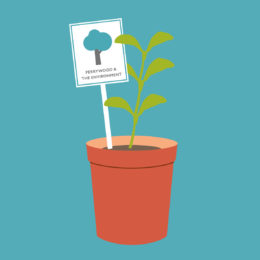Historically peat has been a major ingredient in potting compost, but we now realise that we must stop using it in order to protect our planet. The extraction of peat destroys valuable ecosystems and releases stored carbon which contributes to climate change.
Using peat-free compost at home is a simple step towards helping to support sustainability.

Here are some handy tips to make sure you have a successful growing season:
How is using peat-free different?
In comparison to compost containing peat, it is useful to know that most peat-free ranges will require slightly different watering and feeding patterns. To ensure you get the best results from your peat-free compost, be sure to follow the manufacturer’s instructions on the back of the bag.
Get to know the compost, the texture will vary according to the blend. Take notice of how well it drains or holds water.
Use feed more often
Feeding regularly will keep your plants healthy and looking good throughout the growing season. Although most composts do contain added fertilisers to give your plants an initial boost, it is good practice to start feeding straight away to maintain a strong nutrient content. We have the following recommendations:
For the SylvaGrow composts:

Maxicrop All Purpose
For the New Horizon composts:

Boost All Purpose
For Miracle Gro and Levington composts:

Miracle-Gro All Purpose
Top tip: Feed to prevent and protect – feeding regularly results in strong and healthy plants which will be far less likely to attract pests or disease. By preventing this from happening it means there is never a need to use harmful chemicals that pesticides and treatments often contain, another great environmental benefit!
Be careful not to overwater
Don’t assume that if the surface is dry it needs watering, the pot may well have a soggy bottom! Dig down a little with your finger or a trowel and often you’ll find it is quite damp, in which case there’s no need to water.
In time you can test the pot by its weight. Lift the pot just after watering, you will get to know when the pot feels lighter and needs more water.
Water slowly, a little at a time and stop when water begins to come out of the base.
We’d love to hear your success stories
Please share your photos and stories with us on our Facebook or Instagram pages using #PWpeatfree.




